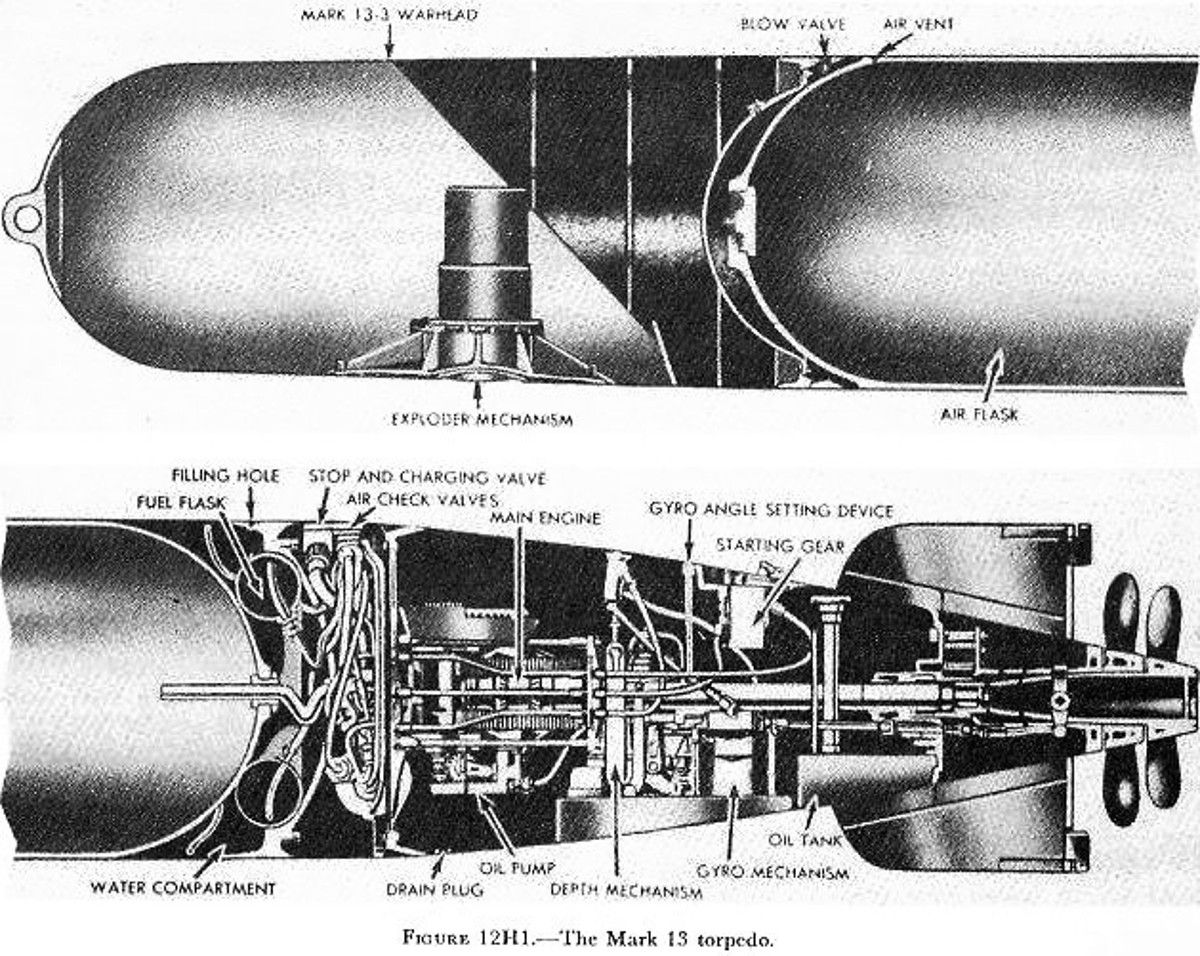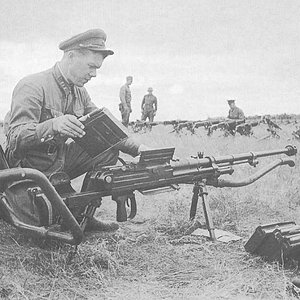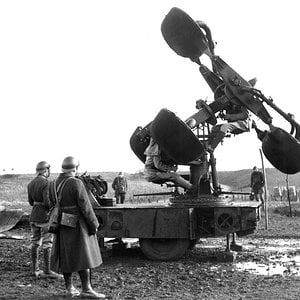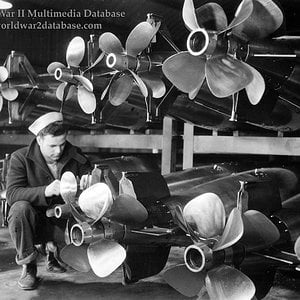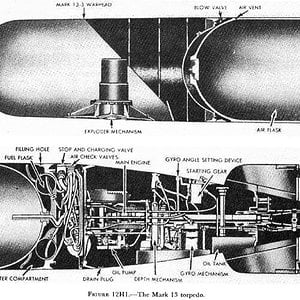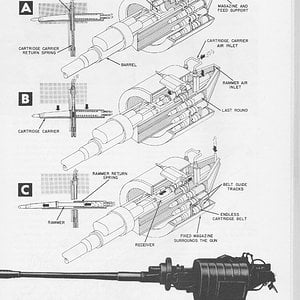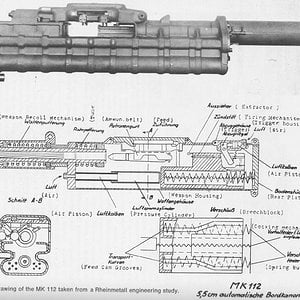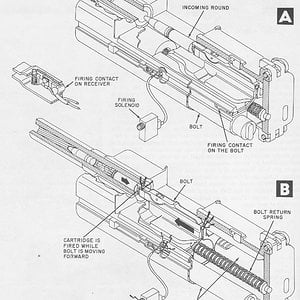Navigation
Install the app
How to install the app on iOS
Follow along with the video below to see how to install our site as a web app on your home screen.
Note: This feature may not be available in some browsers.
More options
You are using an out of date browser. It may not display this or other websites correctly.
You should upgrade or use an alternative browser.
You should upgrade or use an alternative browser.
2H2. Mark l3 torpedo
The Mark 13 torpedo differs from the Mark 15 torpedo in the following ways:
1. The Mark 13 torpedo has better provision for air stabilization, being much shorter and slightly larger in diameter. It is 13 feet 5 inches long, and 22.42 inches in diameter.
2. The Mark 13 torpedo has greater capacity for withstanding water impact.
3. The Mark 13 torpedo contains a smaller explosive charge: 600 pounds of HBX.
4. The Mark 13 torpedo has a shorter designed range: 5,700 yards.
5. The Mark 13 torpedo has a single speed: 33.5 knots.
6. The Mark 13 torpedo has a water trip delay valve to prevent ignition until the torpedo enters the water.
7. The Mark 13 torpedo has a shroud ring around its tail vanes, which tends to minimize hooking and broaching upon water entry, and makes for greater stability during the water run.
8. The Mark 13 torpedo is rigged for launching with a box-shaped plywood stabilizer fitted over the fins and shroud ring. This stabilizer causes the torpedo to fall in a smooth curve, and to enter the water head first. The stabilizer breaks up on impact with the water. A parachute drogue stabilizer has been designed as a substitute for the box stabilizer.
9. The Mark 13 torpedo has a drag ring, in the form of a plywood tube open at each end, fitted over its head. The drag ring slows the torpedo’s rate of fall, tends to reduce wobbling, and acts as a shock absorber on water impact. The stabilizer and drag ring are shown in figure 12H2. This drag ring is not used when the torpedo is rigged with a parachute stabilizer.
Near the after end of the torpedo is a starting lever. When the torpedo is installed on the plane, a toggle is hooked to this lever and is attached to the aircraft by a lanyard. When the torpedo is released, action of the lanyard and toggle trips the starting lever, but a water trip delay valve serves to prevent the combustion flask from lighting off until water entry. A gyro-locking mechanism is also provided. When the torpedo is installed on the plane, the gyro is locked with its axis parallel to the axis of the plane. The gyro begins to spin on release from the plane. The gyro will therefore keep the torpedo on the course determined by the direction of aircraft travel at the instant of release.
The Mark 13 torpedo differs from the Mark 15 torpedo in the following ways:
1. The Mark 13 torpedo has better provision for air stabilization, being much shorter and slightly larger in diameter. It is 13 feet 5 inches long, and 22.42 inches in diameter.
2. The Mark 13 torpedo has greater capacity for withstanding water impact.
3. The Mark 13 torpedo contains a smaller explosive charge: 600 pounds of HBX.
4. The Mark 13 torpedo has a shorter designed range: 5,700 yards.
5. The Mark 13 torpedo has a single speed: 33.5 knots.
6. The Mark 13 torpedo has a water trip delay valve to prevent ignition until the torpedo enters the water.
7. The Mark 13 torpedo has a shroud ring around its tail vanes, which tends to minimize hooking and broaching upon water entry, and makes for greater stability during the water run.
8. The Mark 13 torpedo is rigged for launching with a box-shaped plywood stabilizer fitted over the fins and shroud ring. This stabilizer causes the torpedo to fall in a smooth curve, and to enter the water head first. The stabilizer breaks up on impact with the water. A parachute drogue stabilizer has been designed as a substitute for the box stabilizer.
9. The Mark 13 torpedo has a drag ring, in the form of a plywood tube open at each end, fitted over its head. The drag ring slows the torpedo’s rate of fall, tends to reduce wobbling, and acts as a shock absorber on water impact. The stabilizer and drag ring are shown in figure 12H2. This drag ring is not used when the torpedo is rigged with a parachute stabilizer.
Near the after end of the torpedo is a starting lever. When the torpedo is installed on the plane, a toggle is hooked to this lever and is attached to the aircraft by a lanyard. When the torpedo is released, action of the lanyard and toggle trips the starting lever, but a water trip delay valve serves to prevent the combustion flask from lighting off until water entry. A gyro-locking mechanism is also provided. When the torpedo is installed on the plane, the gyro is locked with its axis parallel to the axis of the plane. The gyro begins to spin on release from the plane. The gyro will therefore keep the torpedo on the course determined by the direction of aircraft travel at the instant of release.

